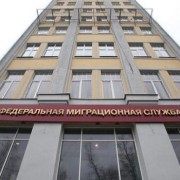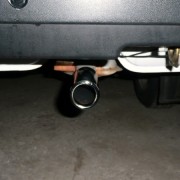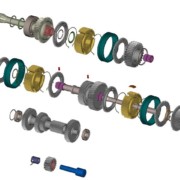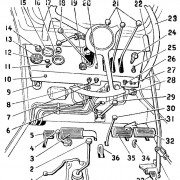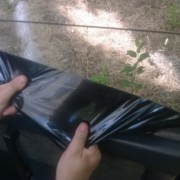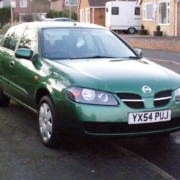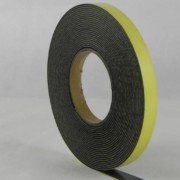Raceport Блог Восстанавливаем BMW Z3 M Coupe. часть1
Содержание:
Marketing
The Z3 appeared briefly in the James Bond movie GoldenEye, in a scene where Bond is driving in Cuba. The Z3 is one of few non-British production cars to be driven by James Bond in a movie, and the first of three James Bond films featuring a BMW car. The Z3 in GoldenEye features stinger missiles hidden behind the headlights, an emergency parachute braking system and a radar scanner in the form of a LCD screen in the dashboard. It is also noted during the briefing scene, that the car contains a passenger ejector seat and a self-destruct system.
Two blue prototypes were provided in January 1995 for filming at the Leavesden Aerodrome. The agreement between BMW and Eon Productions was for cross-promotion of the car and the film, and there was no financial component.
Sales of the Z3 spiked as the film sat at number one at the box office. In the 1996 production run, more than 15,000 roadsters were sold out by the time the car was introduced.
Тест
Внешность
Баварский авто получил запоминающийся дизайн
Внимание привлекает длинный капот, зауженная оптика головного освещения, широкие колесные арки, а также низкий обвес

Однако, кузов кабриолет выглядит более гармонично, нежели купе. У последнего слишком массивная корма.
Салон
Интерьер напоминает кокпит гоночного болида − перед глазами располагается информативная панель приборов с крупными и четкими рисками, а на центральной консоли компактно организован блок климатической системы.

Сборка грамотная − панели подогнаны достаточно точно, однако качество материалов не идеально по причине жесткого пластика.
Обзор вызывает некоторые вопросы. В частности, зеркала бокового вида маловаты и оставляют существенные мертвые зоны.

Кресло водителя имеет неплохой профиль, однако валики боковой поддержки выражены не сильно и в поворотах тело фиксируется нечетко. Помимо этого, рослому драйверу может не хватить диапазона регулировки сиденья в продольной плоскости.
На ходу
Топовым силовым агрегатом является «шестерка» 3.0 литра в 231 силу. Она обеспечивает баварскому родстеру отличную динамику и любит обороты верхнего диапазона.

На «низах» тяги не очень много, но это компенсируется удачно подобранным передаточным рядом трансмиссии − и механической, и автоматической.

Однако, стоит отметить, что механическая коробка лучше подходит для драйва − у нее короткие ходы и четкие переключения. «Автомат» радует плавной работой, но огорчает слишком большими паузами между ступенями.
Что касается управляемости, то здесь упрекнуть BMW Z3 сложно − задний привод, а также грамотная развесовка по осям благоприятно влияют на курсовую устойчивость, причем крены и раскачка почти отсутствуют.

Руль налит приятной тяжестью и у него выраженная обратная связь, однако чувствительность в околонулевой зоне не самая высокая, поэтому резкие маневры даются «баварцу» не всегда легко.

Подвеска жестковатая, но у нее высокая энергоемкость. Тест-драйв показал, что мелкие ухабы машина почти не замечает и позволяет с относительным комфортом передвигаться по неровной дороге.
Фото BMW Z3:
Model year changes
1998
- Coupé models introduced.
- Wood trim and a power soft top were added as options.
- Rollover hoops introduced.
- Automatic stability control (ASC) became standard equipment on 1.9 models.
- Hardtop shell option for Z3 models introduced.
1999 facelift
Production for facelift models began in April 1999. Z3M models did not receive the exterior styling changes. Major changes include:
- Exterior design changes including: redesigned chrome ring headlights and L-shaped taillights, wider rear track by 2.5 in (64mm) (now the same across 4 and 6-cylinder models), model designation badges, finger indent for trunk release button, integrated third brake light (with silver lights on 2.8 and 3.0i models), chrome exhaust tips, and new wheel designs.
- Interior design changes including: redesigned centre console buttons with a clock in the middle and a new three-spoke steering wheel design.
- Engine changes including: 2.0 replaced by 2.2i, 2.3 replaced by 2.5 (US only), 2.8 replaced by 3.0i. All Z3M models changed to S54 engine.
- Electronic stability control upgraded from ASC to new DSC system.
- New three-layer insulation convertible roof with headlining.
- Dual-stage side airbags introduced.
Awards
- 1995 «Super Reggie» Best-of-show award for the GoldenEye marketing campaign
- 1999 Edmunds‘ Most Wanted Convertible $25,001-$40,000 for the Z3 2.8
- 1999 Car and Driver »Ten Best» for M Coupé / M Roadster
- 1999 Automobile Magazine «Design of the Year» award for the M Coupé
- 1999 Automobile Magazine «Best Sports Car» award for the M Coupé
- 2000 Intellichoice «Best Overall Value of the Year» — «Base Sport» for the Z3 Roadster 2.3
- 2000 Top Gear (TV show) «Driver’s Car of the Year» for the M Coupé
- 2009 Jalopnik «Best 10 Cars of the Decade» feature for the M Coupé
- 2011 Top Gear «Hammond’s Icons» for the M Coupé
Special Models
James Bond Edition
007 Bond Edition
To tie in with the , BMW released a «James Bond Edition» Z3 for sale through the Neiman Marcus Christmas catalogue. The James Bond Edition sold in 1996 for US$35,000. BMW and Neiman Marcus had originally set a 20-unit sales goal, but was later increased to 100 units after receiving a high level of interest orders.
The James Bond Edition was based on the Z3 1.9 and included a 007 dash plaque, 007 Bond floor mats, unique wheels, and chrome exterior trim. The colour scheme was an «Atlantic blue» exterior with beige leather interior, as per the Z3 which appeared in GoldenEye.
V12 prototype
In 1999, the BMW M division produced a single prototype Z3 powered by the 5.4 L M73 V12 engine, in order to test the space efficiency of the engine bay. It is based on a convertible Z3, wears 17 inch wheels with 225/45 tires up front and 245/40 at the back, and is painted in a shade of orange. The V12 produces 322 hp (240 kW; 326 PS) at 5,000 rpm and 490 N⋅m (361 lb⋅ft) of torque at 3,900 rpm, and power is sent through a 6-speed manual transmission. The concept is much heavier than the standard Z3 at 1,400 kg (3,086 lb), giving it 70/30 weight distribution. The concept was only shown once, which was in 1999 to the motoring magazine Autozeitung. Their tests revealed a 0-100 km/h (62 mph) time of 5.5 seconds, 0 to 1,000m (0.62 miles) in 24.4 seconds, and a top speed of 263 km/h (163 mph).
Z3M versions
The Z3M versions were introduced in 1997 in the roadster (M Roadster) and coupé (M Coupé) body styles. European models were initially powered by the engine, while North American models were powered by the S52 engine. In 2001 both the European and North American models switched to the new engine. Models were only available with a 5-speed manual transmission.
Compared to the standard Z3, M models featured a limited slip differential, a wider rear track, and larger brakes (that are shared with the E36 M3). Z3M models were available in M-specific colors, they feature more aerodynamic wing-mirrors as well as redesigned front and rear bumpers and bespoke «Roadstar» Style 40 wheels, revised side gill and quad exhausts. The interior can also be differentiated by the voltmeter, clock and oil temperature gauges in the center console, leather-wrapped center console and door pulls, as well as unique M-styled seats and interior color options.
Unlike the rest of the Z3 range, the Z3M did not receive cosmetic changes during the facelift in 2000.
Models
The 4-cylinder models feature a single tailpipe, while 6-cylinder models have dual tailpipes, wheelarch flares (for pre-facelift models), and a revised front bumper. The 2.3 and 2.5 models were sold exclusively in the United States, while the 1.8, 2.0, and 2.2i models were not available.
4-cylinder engines
| Model | Years | Engine | Power | Torque | 0-100 km/h (0-62 mph) |
|---|---|---|---|---|---|
| 1.8 | 1995–1998 | 1.8 L I4 | 85 kW (114 hp; 116 PS) at 5,500 rpm | 168 N⋅m (124 lb⋅ft) at 3,900 rpm | 10.5 s |
| 1999–2000 | 1.9 L I4 | 87 kW (117 hp; 118 PS) at 5,500 rpm | 180 N⋅m (133 lb⋅ft) at 3,900 rpm | 10.4 s | |
| 1.9i | 1995–1999 | 1.9 L I4 | 103 kW (138 hp; 140 PS) at 6,000 rpm | 180 N⋅m (133 lb⋅ft) at 4,300 rpm | 9.5 s |
| 2000–2002 | 1.9L I4 | 87 kW (117 hp; 118 PS) at 5,500 rpm | 180 N⋅m (133 lb⋅ft) at 3,900 rpm | 10.4 s |
6-cylinder engines
| Model | Years | Engine | Power | Torque | 0-100 km/h (0-62 mph) |
|---|---|---|---|---|---|
| 2.0 | 1999–2000 | 2.0 L I6 | 110 kW (148 hp; 150 PS) at 5,900 rpm | 190 N⋅m (140 lb⋅ft) at 3,500 rpm | 8.9 s |
| 2.2i | 2000–2002 | 2.2 L I6 | 125 kW (168 hp; 170 PS) at 6,100 rpm | 210 N⋅m (155 lb⋅ft) at 3,500 rpm | 7.9 s |
| 2.3 | 1998–1999 | 2.5 L I6 | 127 kW (170 hp; 173 PS) at 5,500 rpm | 245 N⋅m (181 lb⋅ft) at 3,500 rpm | |
| 1999–2000 | 125 kW (168 hp; 170 PS) at 5,500 rpm | ||||
| 2.5 | 2000–2002 | 2.5 L I6 | 137 kW (184 hp; 186 PS) at 6,000 rpm | 237 N⋅m (175 lb⋅ft) at 3,500 rpm | |
| 2.8 | 1997–1998 | 2.8 L I6 | 141 kW (189 hp; 192 PS) at 5,300 rpm | 275 N⋅m (203 lb⋅ft) at 3,950 rpm | 7.1 s |
| 1999–2000 | 2.8 L I6 | 142 kW (190 hp; 193 PS) at 5,300 rpm | 280 N⋅m (207 lb⋅ft) at 3,500 rpm | 6.9 s | |
| 3.0i | 2000–2002 | 3.0 L I6 | 170 kW (228 hp; 231 PS) at 5,900 rpm | 300 N⋅m (221 lb⋅ft) at 3,500 rpm | 6.0 s |
| Z3M (EU) | 1997–2000 | 3.2 L I6 | 236 kW (316 hp; 321 PS) at 7,400 rpm | 350 N⋅m (258 lb⋅ft) at 3,250 rpm | 5.4 s |
| 2001–2002 | 3.2 L I6 | 239 kW (321 hp; 325 PS) at 7,400 rpm | 350 N⋅m (258 lb⋅ft) at 4,900 rpm | 5.3 s | |
| Z3M (US) | 1997–2000 | 3.2 L I6 | 179 kW (240 hp; 243 PS) at 6,000 rpm | 305 N⋅m (225 lb⋅ft) at 4,250 rpm | |
| 2001–2002 | 3.2 L I6 | 235 kW (315 hp; 320 PS) at 7,400 rpm | 340 N⋅m (251 lb⋅ft) at 4,900 rpm |
Development and launch
Development on the roadster began in 1991 and was led by Burkhard Göschel. The exterior was designed by Joji Nagashima, being completed in mid-1992 at 39 months before production and the design was frozen in 1993. Design patents were filed on April 2, 1994 in Germany and on September 27, 1994 in the US. The Z3 was introduced via video press release by BMW North America on June 12, 1995. Production began on September 20, 1995.
Development on the coupé model was run by a group of BMW engineers outside of work in their own time. The Z3 Coupé shares the same platform and parts with the roadster, but features a chassis-stiffening hatch area and is 2.7 times stiffer in comparison. The Z3 Coupé was unveiled at the .
The Z3 was the first BMW model to be solely manufactured outside of Germany. It was manufactured in Greer, South Carolina.




